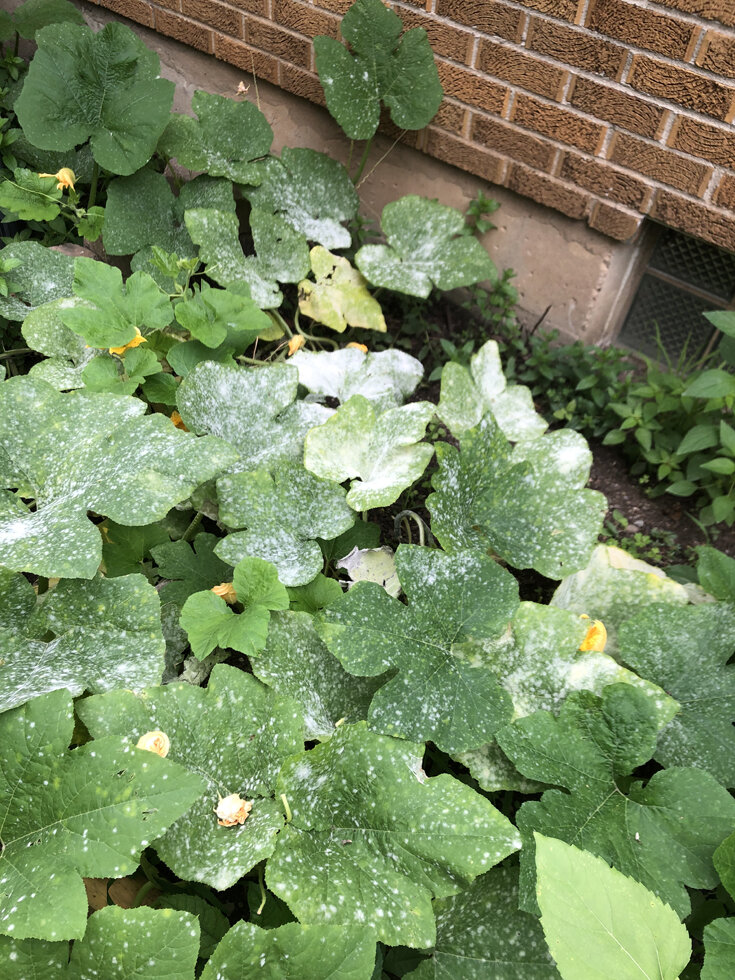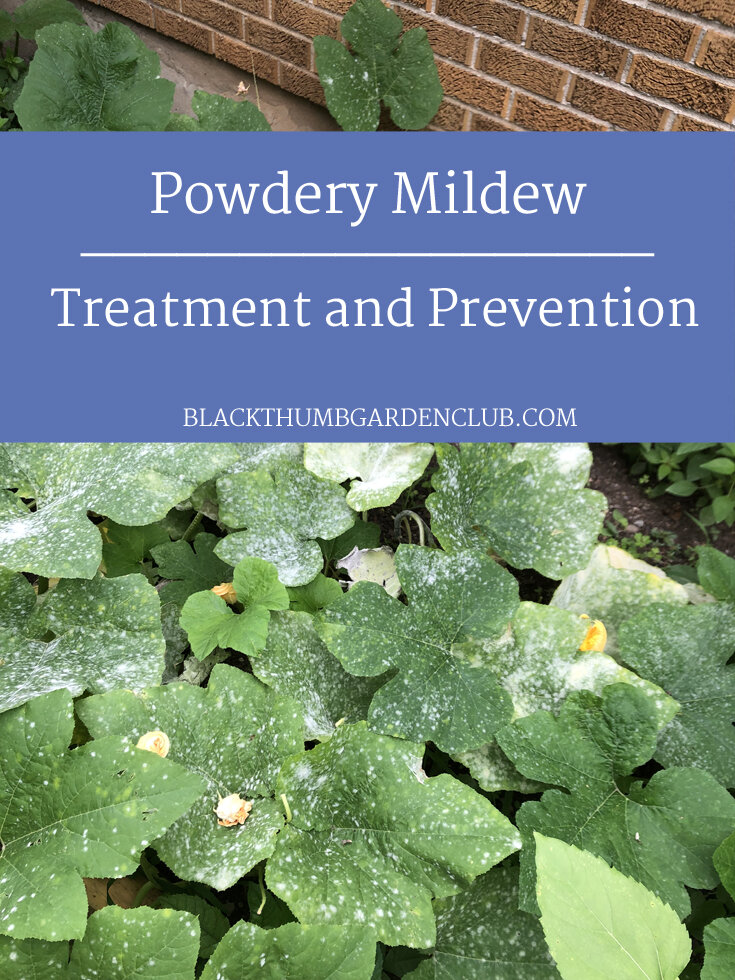Yes, you can compost powdery mildew leaves. Ensure they are thoroughly decomposed to avoid spreading the disease.
Composting is an excellent way to recycle garden waste and enrich soil. Many gardeners wonder if powdery mildew-infected leaves can be composted safely. Powdery mildew is a fungal disease that affects many plants, causing white, powdery spots on leaves. Proper composting can eliminate the fungus if done correctly.
Hot composting, which reaches temperatures of 140-160°F, effectively kills most pathogens, including powdery mildew. Turn the compost pile frequently to ensure even heating. Avoid adding heavily infected leaves to cold compost piles, as the fungus may survive. By following these guidelines, you can safely compost powdery mildew leaves and maintain a healthy garden.
Introduction To Powdery Mildew
Powdery mildew is a common fungal disease. It affects many plants. This disease can spread quickly. It can harm your garden. You may wonder if you can compost powdery mildew leaves. First, let’s understand what powdery mildew is.
What Is Powdery Mildew?
Powdery mildew is a type of fungus. It appears as a white or gray powder. This powder covers leaves, stems, and flowers. It thrives in warm, dry climates. The fungus spreads through spores. Spores can travel by wind, water, or insects. Powdery mildew weakens plants. It reduces their ability to photosynthesize. This can lead to stunted growth.
Common Plants Affected
Many plants can get powdery mildew. Below is a table of common plants affected:
| Plant Type | Examples |
|---|---|
| Vegetables | Tomatoes, Cucumbers, Squash |
| Fruit Trees | Apples, Grapes, Peaches |
| Flowers | Roses, Zinnias, Lilacs |
| Herbs | Basil, Rosemary, Sage |
These plants are often found in home gardens. Powdery mildew can spread quickly among them. It is essential to know how to manage this disease. Proper management can save your plants.
Identifying Powdery Mildew
Powdery mildew is a common fungal disease affecting many plants. Identifying it early can help manage and control its spread. Knowing the visual signs and the conditions for its growth is essential.
Visual Signs
Powdery mildew appears as white or gray powdery spots on leaves. These spots often grow larger and cover entire leaves. Infected leaves may turn yellow, dry up, or become distorted.
Look for the following signs:
- White or gray patches on leaves
- Stunted or deformed growth
- Yellowing leaves
- Premature leaf drop
Conditions For Growth
Powdery mildew thrives in warm, dry conditions. It often appears in late summer or early fall. High humidity and poor air circulation can increase its spread.
Key conditions include:
| Condition | Details |
|---|---|
| Temperature | 60-80°F (15-27°C) |
| Humidity | High, especially at night |
| Air Circulation | Poor |
| Plant Density | High, with crowded plants |
Understanding these conditions can help prevent powdery mildew. Regular monitoring and proper plant care are crucial.
Composting Basics
Composting is a natural process where organic matter breaks down into rich soil. It helps reduce waste and benefits the environment. But can you compost powdery mildew leaves? Let’s explore the basics of composting to find out.
What Is Composting?
Composting is nature’s way of recycling organic material. It involves the decomposition of kitchen scraps, garden waste, and other organic matter. Microorganisms, worms, and insects break down these materials into nutrient-rich humus.
Here’s a simple way to understand composting:
- Organic Waste: Includes fruits, vegetables, leaves, and grass clippings.
- Microorganisms: Bacteria and fungi that decompose the waste.
- Oxygen: Needed for aerobic decomposition.
- Moisture: Helps microbes thrive and break down material.
Benefits Of Composting
Composting provides numerous benefits for your garden and the planet. Here are some key advantages:
| Benefit | Description |
|---|---|
| Reduces Waste | Less garbage ends up in landfills, reducing methane emissions. |
| Enriches Soil | Compost adds essential nutrients, improving soil health and fertility. |
| Water Retention | Helps soil retain moisture, reducing the need for frequent watering. |
| Eco-Friendly | Supports a sustainable lifestyle by recycling organic matter. |
Composting also helps reduce the need for chemical fertilizers. It promotes the growth of beneficial bacteria and fungi. These microbes break down organic matter into humus.
With these basics in mind, can you compost powdery mildew leaves? Stay tuned for more insights in the next section of our blog post.
Risks Of Composting Diseased Leaves
Composting is a great way to recycle garden waste. But composting diseased leaves, like those with powdery mildew, can be risky. Understanding these risks is important for a healthy compost pile.
Potential Spread Of Disease
Powdery mildew is a common fungal disease. It can easily spread through spores. Composting infected leaves can spread these spores.
These spores can survive in the compost. They may infect other plants when the compost is used. This can cause more plants to get sick.
Preventing the spread of this disease is crucial. Always be cautious when adding diseased leaves to your compost pile.
Impact On Compost Quality
Diseased leaves can affect compost quality. They can slow down the composting process.
Fungal spores can make the compost less effective. This can lead to poor plant growth.
Healthy compost is rich in nutrients. Diseased leaves can reduce these nutrients.
It is best to compost healthy leaves. This ensures your compost stays high-quality and beneficial for your garden.
Here is a quick summary of the risks:
| Risk | Impact |
|---|---|
| Spread of disease | Can infect other plants |
| Compost quality | Reduced nutrients and effectiveness |
Being aware of these risks helps you make better composting choices. Keep your garden healthy by managing diseased leaves carefully.
Safe Composting Practices
Composting is a fantastic way to recycle garden waste. But what about powdery mildew leaves? Can you safely compost them? Yes, you can! By following safe composting practices, you can turn these infected leaves into rich compost.
High-temperature Composting
High temperatures are vital for composting infected leaves. Aim for a pile temperature of at least 140°F (60°C). This heat kills the powdery mildew spores.
To achieve high temperatures, use a compost thermometer. Monitor the temperature regularly. Add green materials like grass clippings to boost heat. Turn the pile frequently to maintain heat distribution.
Proper Aeration And Moisture
Aeration and moisture are crucial for healthy compost. Make sure your pile has enough oxygen. Turn the pile every few weeks. This helps to speed up decomposition.
Keep the compost moist but not wet. The pile should feel like a damp sponge. Too much water can cause bad odors. Too little water slows down decomposition.
| Composting Tip | Action |
|---|---|
| Temperature Monitoring | Use a compost thermometer, aim for 140°F (60°C) |
| Turning the Pile | Every few weeks for proper aeration |
| Moisture Levels | Keep the pile as moist as a damp sponge |
By following these safe composting practices, you can compost powdery mildew leaves effectively. Your garden will benefit from rich, healthy compost.

Credit: backyardgardenclub.org
Alternative Disposal Methods
Dealing with powdery mildew leaves can be tricky. Composting isn’t always the best choice. Consider these alternative disposal methods to ensure your garden stays healthy.
Burning Infected Leaves
Burning the infected leaves is an effective method. It kills the powdery mildew spores completely. Ensure you follow local regulations before burning leaves.
Use a safe burning area. Keep a water source nearby. Wear protective gear to avoid inhaling smoke. This method prevents the spores from spreading.
Trash Disposal
If burning isn’t an option, consider trash disposal. Place the infected leaves in a sealed bag. This prevents the spores from escaping.
Dispose of the bag in your regular trash. Do not use the leaves for composting or mulching. This method ensures the spores don’t spread in your garden.
| Method | Pros | Cons |
|---|---|---|
| Burning | Kills all spores | Requires safety measures |
| Trash Disposal | Easy to execute | Not eco-friendly |
Both methods have their pros and cons. Choose the one that suits you best. Ensure your garden stays free from powdery mildew.
Preventing Powdery Mildew
Powdery mildew is a common fungal disease affecting plants. It appears as a white, powdery substance on leaves. Preventing it helps keep your garden healthy. Here are some effective methods to prevent powdery mildew.
Cultural Practices
Cultural practices are natural ways to avoid powdery mildew. These methods don’t involve chemicals. They are safe for kids, pets, and the environment.
- Proper Spacing: Plant your seeds or plants with enough space between them. This allows good air circulation.
- Watering Techniques: Water plants at the base, not the leaves. Wet leaves can promote fungal growth.
- Pruning: Remove dead or infected leaves. This reduces the spread of mildew.
- Sunlight: Ensure your plants get enough sunlight. Fungi hate sunlight.
Chemical Treatments
Sometimes, cultural practices aren’t enough. You may need chemical treatments. Always use them safely and correctly.
- Fungicides: Use fungicides designed for powdery mildew. Follow the instructions on the label.
- Baking Soda Spray: Mix 1 tablespoon of baking soda with 1 gallon of water. Spray on affected leaves.
- Neem Oil: Neem oil is natural and effective. Mix with water and spray on plants.
- Milk Spray: Mix 1 part milk with 2 parts water. Spray on leaves weekly.
Employing these practices and treatments helps prevent powdery mildew. Your garden stays lush and healthy.

Credit: joegardener.com

Credit: backyardgardenclub.org
Frequently Asked Questions
Can You Compost Leaves With Powdery Mildew?
Yes, you can compost leaves with powdery mildew. Ensure the compost reaches high temperatures to kill the mildew.
How Do You Compost Infected Leaves Safely?
Shred the leaves and mix them in a hot compost pile. Maintain a temperature above 140°F for effective decomposition.
Does Powdery Mildew Survive Composting?
Powdery mildew can survive if the compost doesn’t get hot enough. Ensure your compost reaches at least 140°F to kill pathogens.
Can Composting Kill Powdery Mildew?
Yes, composting can kill powdery mildew if the pile reaches temperatures above 140°F consistently.
Conclusion
Composting powdery mildew leaves is possible with proper precautions. Ensure leaves are thoroughly dried before adding them. Balance with healthy compost materials. This helps prevent the spread of mildew. Proper composting can turn problematic leaves into valuable garden nutrients. So, compost wisely and enjoy a healthier garden.
